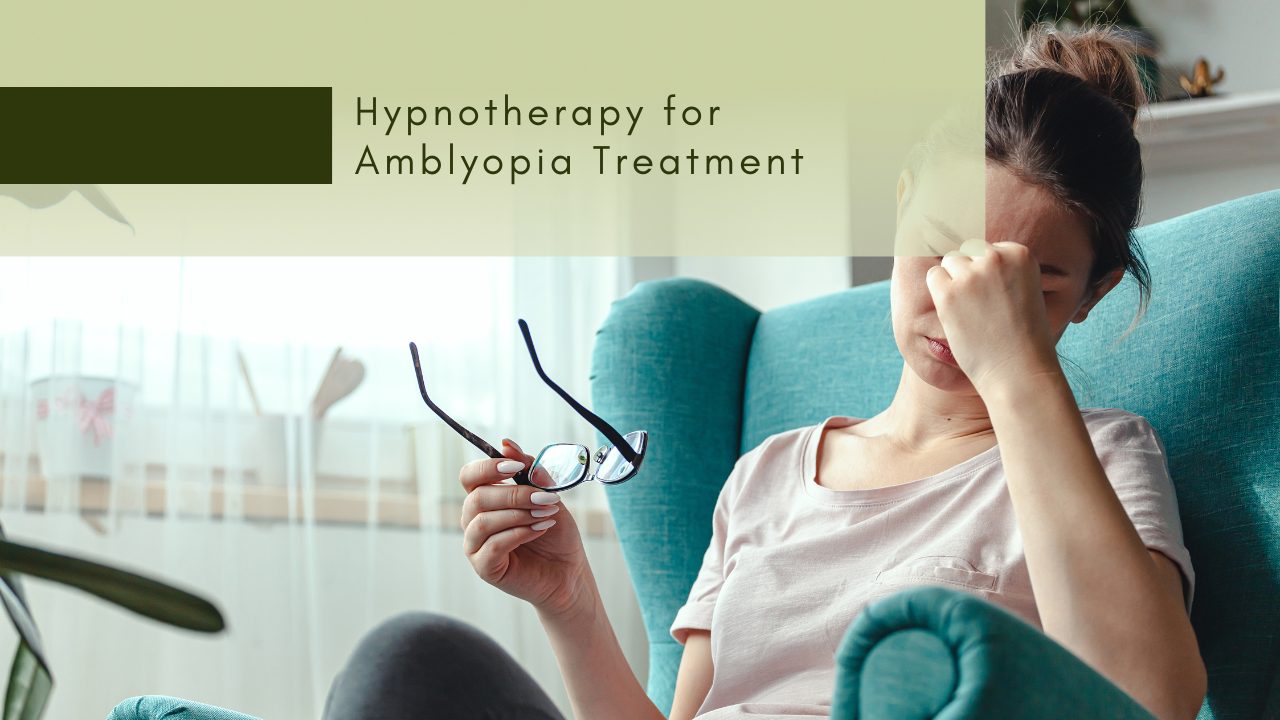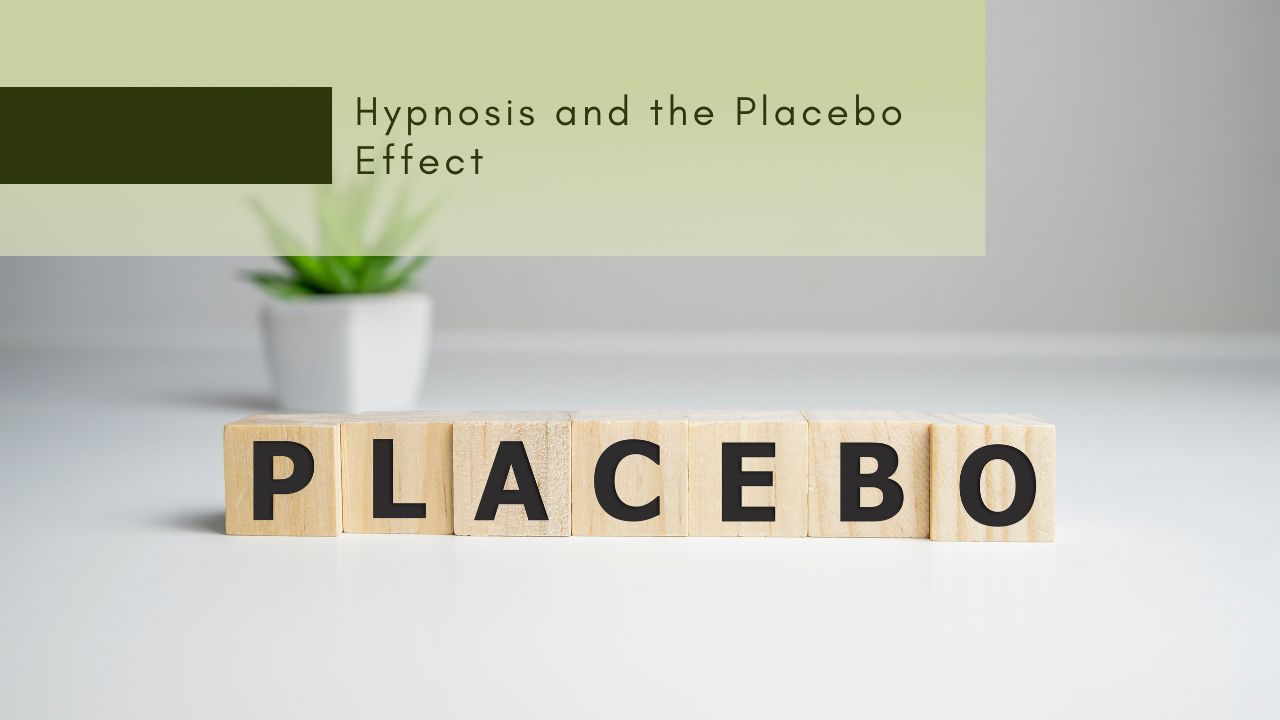While hypnotherapy is not a standard or primary treatment for amblyopia, there is evidence suggesting that it may play a role in supporting certain aspects of vision therapy or addressing psychological factors associated with the condition. in This article we will learn more about how we can use hypnotherapy for Amblyopia treatment.
Amblyopia: Its Influence on Vision and Living Quality
Amblyopia, often referred to as “lazy eye,” is a condition that typically develops in childhood and is characterized by reduced vision in one eye. This reduction in vision occurs not because of a structural problem with the eye itself but because the brain favors the other eye. If left untreated, amblyopia can have significant influences on vision and overall quality of life. Below are some effects:
- Visual Acuity: The most noticeable impact of amblyopia is reduced visual acuity in the affected eye. This means that individuals with amblyopia may have poorer eyesight in one eye compared to the other. In some cases, the difference in acuity between the two eyes can be substantial.
- Depth Perception: Amblyopia can affect depth perception, which is the ability to perceive the distance between objects accurately. The brain relies on input from both eyes to create a three-dimensional view of the world. Reduced vision in one eye can impact the ability to judge distances and may affect activities that require good depth perception, such as sports or driving.
- Binocular Vision: Binocular vision, which involves the coordinated use of both eyes, is often compromised in individuals with amblyopia. Poor binocular vision can affect tasks that require the integration of visual information from both eyes, such as reading, catching a ball, or navigating obstacles.
- Impact on Daily Activities: Activities that rely heavily on vision, such as reading, writing, and other visually demanding tasks, may be more challenging for individuals with amblyopia. Struggling with these activities can affect academic performance, professional pursuits, and overall productivity.
- Self-Esteem and Social Interaction: Amblyopia can have social and emotional implications, particularly in children. A noticeable difference in the appearance of the eyes or challenges with certain activities may lead to self-consciousness, reduced self-esteem, or difficulties in social interactions.
- Psychosocial Impact: The psychosocial impact of amblyopia can extend beyond childhood into adulthood. Individuals with amblyopia may face challenges in various aspects of life, including educational and career opportunities. Vision-related concerns may contribute to anxiety or feelings of isolation.
The earlier amblyopia is detected and treated, the better the chances of improving vision. Common treatment approaches include patching the stronger eye to encourage the use of the weaker eye, corrective lenses, and vision therapy exercises. However, treatment success can vary, and some individuals may experience persistent visual challenges.
Quality of Life Improvements with Treatment: Timely and appropriate treatment of amblyopia can lead to improvements in visual acuity and function. Effective treatment may enhance an individual’s ability to perform daily activities, boost self-confidence, and positively impact overall quality of life.
It’s important to note that the severity of amblyopia and the success of treatment can vary among individuals. Regular eye examinations, especially in childhood, are essential for early detection and intervention.
Hypnotherapy: A Promising Ally in the Amblyopia Battle
While hypnotherapy is not a standard or primary treatment for amblyopia, there is evidence suggesting that it may play a role in supporting certain aspects of vision therapy or addressing psychological factors associated with the condition. The following are some ways in which hypnotherapy might be helpful:
- Reducing Anxiety and Stress: Children with amblyopia may experience stress or anxiety related to vision therapy exercises or wearing an eye patch. Hypnotherapy can be used to help reduce stress and anxiety, making it easier for the child to engage in necessary treatments.
- Enhancing Relaxation: Hypnotherapy techniques, such as relaxation exercises and guided imagery, can promote a state of relaxation. This relaxation may be beneficial in encouraging a more receptive mindset for vision therapy activities.
- Increasing Focus and Attention: Hypnotherapy can help improve focus and attention, which may be beneficial during vision therapy exercises that require sustained concentration. By enhancing focus, individuals may be better able to engage in the prescribed visual activities.
- Addressing Psychological Factors: Children with amblyopia may experience challenges related to self-esteem or confidence, especially if the condition is noticeable or if they face difficulties with certain visual tasks. Hypnotherapy may be used to address psychological factors, boost confidence, and foster a positive mindset.
- Complementing Traditional Interventions: While hypnotherapy is not a substitute for traditional treatments, it might be considered as a complementary approach to support the overall well-being of individuals undergoing vision therapy for amblyopia.
It’s important to note that the evidence supporting the use of hypnotherapy specifically for amblyopia is limited, and its effectiveness in improving visual outcomes remains incomplete.
Spotlight on the Advantages of Hypnotherapy in Treating Amblyopia
The key advantage of using hypnotherapy as part of a treatment plan for Amblyopia is that it alters the clients thinking and behaviours and helps address the phycological issues associated with the condition.
Ready for Change: Setting Up for Your First Hypnotherapy Session for Amblyopia
Below are some tips for setting yourself up in readiness for your first hypnotherapy session for Amblyopia:
- Research Hypnotherapy: Familiarize yourself with what hypnotherapy involves, its potential benefits, and how it is used in a therapeutic context. Understanding the basics can help you feel more at ease during the session.
- Consult with Healthcare Professionals: Before pursuing hypnotherapy, consult with your eye care professional, such as an optometrist or ophthalmologist, to ensure that it is a safe and appropriate complementary approach for your specific situation.
- Clarify Your Goals: Clearly define your goals for seeking hypnotherapy. Whether it’s reducing stress and anxiety related to amblyopia treatment, improving focus, or addressing psychological factors, having clear goals will help guide the hypnotherapy process.
- Discuss with the Hypnotherapist: Prior to the first session, have a discussion with the hypnotherapist. Share information about your amblyopia, the treatments you are undergoing, and any concerns or specific challenges you are facing. This conversation will help tailor the sessions to your needs.
- Manage Expectations: Understand that the effectiveness of hypnotherapy can vary among individuals, and it may not provide a cure for amblyopia. Be realistic about what hypnotherapy can offer and consider it as a complementary approach rather than a standalone treatment.
- Choose a Comfortable Setting: Select a comfortable and quiet setting for the hypnotherapy session. This could be the hypnotherapist’s office or another online location where you feel at ease. Being in a comfortable environment can enhance the effectiveness of the session.
- Dress Comfortably: Wear comfortable clothing for the session. Since hypnotherapy often involves relaxation techniques, being physically comfortable is important.
- Be Open-Minded: Approach the session with an open mind. Hypnotherapy involves a state of focused attention and concentration, and being receptive to the process can enhance its potential benefits.
- Ask Questions: Don’t hesitate to ask the hypnotherapist any questions you may have about the process, the techniques they use, and what you can expect during and after the session.
Navigating an Amblyopia-focused Hypnotherapy Session: What Happens?
The specific approach may vary depending on the hypnotherapist’s methods and your individual needs. It is essential that you consult with your healthcare professional and choose a qualified hypnotherapist who would ideally work in coordination with your healthcare professionals. The following is what you could expect for your first amblyopia-focused hypnotherapy session:
- Introduction and Relaxation: The session typically begins with the hypnotherapist introducing themselves and explaining the purpose of the session. They may use relaxation techniques, such as deep-breathing exercises or progressive muscle relaxation, to induce a state of calm and relaxation.
- Establishing Rapport: Building trust and rapport is crucial. The hypnotherapist may engage in conversation to understand your experiences with amblyopia, any challenges you face, and your goals for the session.
- Setting Goals for the Session: The hypnotherapist and you will discuss the specific goals for the session. This could include reducing stress related to amblyopia, addressing anxiety about treatments, or fostering a positive mindset toward the condition.
- Induction and Deepening: The hypnotherapist guides you into a state of focused attention, often referred to as a hypnotic state. This involves using calming language, imagery, or other techniques to enhance your receptivity to suggestions.
- Positive Suggestions: During the hypnotic state, the hypnotherapist may provide positive suggestions related to your amblyopia experience. This might involve visualizing a positive outcome, cultivating a sense of calm during treatments, or reframing negative thoughts.
- Addressing Emotional Factors: If there are specific emotional factors associated with amblyopia, the hypnotherapist may guide you through a process to explore and address these emotions. This could involve identifying and reframing limiting beliefs or negative associations.
- Visualisation Techniques: Visualisation is a common element in hypnotherapy. The hypnotherapist may guide you through visualising positive scenarios related to your amblyopia, such as envisioning successful treatments or experiencing a sense of comfort and ease.
- Empowerment and Coping Strategies: The session may include suggestions for coping strategies and empowerment. This could involve reinforcing your ability to cope with treatments, fostering a sense of control over your emotions, and building resilience.
- Returning to Full Awareness: Toward the end of the session, the hypnotherapist will guide you back to a fully aware state. You may discuss your experiences during the session, and the hypnotherapist may offer insights or recommendations for ongoing practices.
- Integration and Follow-Up: – The hypnotherapist may discuss ways to integrate the insights and suggestions from the session into your daily life. They might provide self-hypnosis techniques, affirmations, or other practices for ongoing support.
It’s important to approach hypnotherapy for amblyopia or any other medical condition with realistic expectations and as part of a comprehensive treatment plan. Always consult with your eye care specialist or other healthcare providers to ensure that complementary approaches align with your overall care plan.
Choosing Your Hypnotherapy Guide: Pinning Down a Specialist for Amblyopia Treatment
Selecting a hypnotherapist in Auckland for amblyopia or any other condition involves careful consideration to ensure that you choose a qualified and experienced professional. Below are some tips to help you select a hypnotherapist for amblyopia:
- Consult with Healthcare Professionals: Before seeking hypnotherapy, consult with your eye care professional, such as an optometrist or ophthalmologist, to discuss your interest in complementary approaches. Ensure that hypnotherapy is considered safe and appropriate for your specific condition.
- Seek Referrals: Ask your healthcare professional for recommendations or referrals to hypnotherapists who have experience working with individuals with medical conditions, including amblyopia. Personal referrals from trusted sources can also be valuable.
- Check Credentials: Verify the credentials of potential hypnotherapists. Look for certifications from recognized hypnotherapy organisations.
- Experience and Specialisation: Choose a hypnotherapist with experience in working with medical conditions or individuals with visual challenges. Ask about their experience with amblyopia or similar conditions and whether they have successfully helped clients with similar concerns.
- Initial Consultation: Schedule an initial consultation with the hypnotherapist. This can be an opportunity to discuss your specific concerns related to amblyopia, ask questions about their approach, and assess whether you feel comfortable working with them.
- Ask About Approach and Techniques: Inquire about the hypnotherapist’s approach to working with amblyopia. Ask about the techniques they use and how they tailor their sessions to address the unique challenges associated with the condition.
- Collaboration with Healthcare Professionals: Consider hypnotherapists who are open to collaborating with your healthcare professionals, such as your eye care specialist. A collaborative approach ensures that all aspects of your care are considered.
- Ethical Practices: Choose a hypnotherapist who adheres to ethical practices, including confidentiality, respect for your autonomy, and a commitment to providing a safe and non-judgmental environment.
- Cost and Logistics: Discuss the cost of sessions and any logistical details, such as the frequency and duration of sessions. Ensure that the logistics align with your schedule and preferences.
- Trust Your Instincts: Pay attention to your instincts and how you feel during the initial consultation. Trust and comfort are crucial in the therapeutic relationship, so choose a hypnotherapist with whom you feel at ease.




